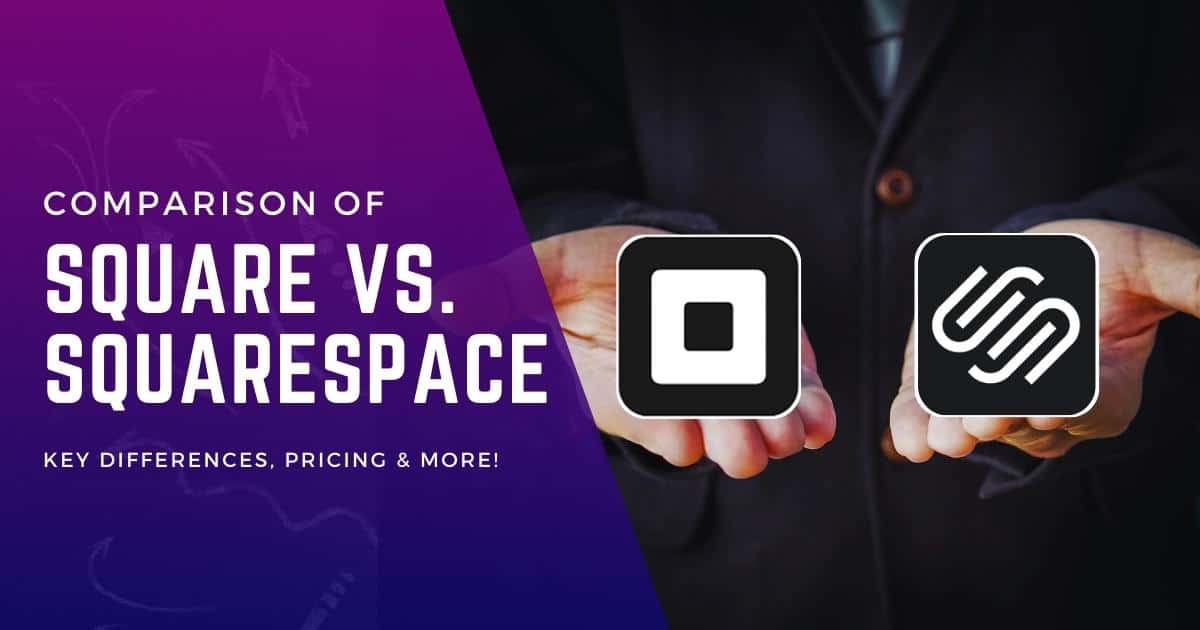Starting an online store with WordPress is more than just a project; it’s your gateway to a professional eCommerce platform and full functioning business website. Thanks to its user-friendly interface and customizable themes, anyone can build a revenue-generating site.
The road to eCommerce isn’t without bumps like selecting the right WooCommerce plugin or managing web hosting. I speak as a web developer with firsthand challenges in this area. Rest assured, the tips ahead will tackle these common issues and simplify them for you.
If you’re a marketer, blogger, or budding entrepreneur, mastering WordPress significantly amplifies your online presence. Get ready to level up your sales potential and establish your brand like never before.
Choosing the Best Platform for Your Online Store
Comparing Different Ecommerce Platforms
When starting an online store, one of the crucial decisions you must make is choosing the right ecommerce platform. With numerous options available in the market, it’s essential to compare different ecommerce store platforms to find the best fit for your online shop. Consider factors like ease of use, customization options, and integration capabilities.
Some popular ecommerce platforms include Shopify, WooCommerce, Magento, and BigCommerce. Each platform has its own strengths and weaknesses. Take your time to research and evaluate these options before making a decision.
Why WordPress is a Suitable Choice for Building an Online Store
Among the various ecommerce platforms available, WordPress stands out as a highly suitable choice for building an online store. It offers a user-friendly interface and extensive customization capabilities through plugins and themes.
WordPress provides flexibility in terms of design and functionality. You can easily create a visually appealing online store that aligns with your brand identity. Its powerful content management system allows you to efficiently manage products, inventory, orders, and customer data.
Moreover, WordPress has a large community of developers who continuously contribute plugins and themes designed for ecommerce. This massive ecosystem ensures you access a wide range of features and functionalities to enhance your online store’s performance.
Considering Factors When Choosing a Platform
When selecting an ecommerce platform for your online store, several factors should be taken into account:
- Cost: Evaluate upfront costs (hosting fees) and ongoing expenses (transaction fees). Consider which platform offers reasonable pricing plans that align with your budget.
- Scalability: Ensure that the chosen platform can accommodate the growth of your business over time. Look for scalability features like unlimited product listings or easy integration with third-party tools that support expansion.
- Flexibility: Assess how easily you can customize your online store based on your unique needs. Look for platforms that provide design templates, plugins, and integrations.
- Security: Online stores deal with sensitive customer information and payment details. It is crucial to choose a platform that prioritizes security measures, such as SSL certificates and regular updates.
- Mobile Responsiveness: With the increasing number of mobile shoppers, it’s essential for your online store to be mobile-friendly. Look for platforms that offer responsive designs or dedicated mobile apps.
Key Features to Look for in an Ecommerce Platform
To ensure a successful online store, consider these key features when choosing an ecommerce platform:
- Easy Product Management: The platform should allow you to add, edit, and organize products effortlessly. Look for features like bulk product import/export and inventory management tools.
- Secure Payment Gateways: Ensure that the platform supports popular payment gateways like PayPal or Stripe. This allows customers to make secure transactions on your website.
- SEO-Friendly Structure: Optimize your online store’s visibility by selecting a platform that offers SEO-friendly features such as customizable URLs, meta tags, and sitemaps.
- Marketing Tools: Look for built-in marketing tools like discount code generators, email marketing integration, and social media sharing options to promote your products effectively.
- Analytics and Reporting: Choose a platform that provides detailed analytics and reporting capabilities so you can track sales performance, customer behavior, and other important metrics.
Importance of Selecting a Platform Aligned with Your Business Goals
Selecting the right ecommerce platform is crucial because it sets the foundation for your online store’s success. By aligning the chosen platform with your business goals, you can create an optimized shopping experience for your customers while efficiently managing operations behind the scenes.
A well-chosen ecommerce platform ensures seamless functionality, scalability as per business growth demands, easy customization options based on branding requirements, enhanced security measures safeguarding customer data privacy, mobile responsiveness catering to the increasing number of mobile shoppers, and comprehensive features to manage products, payments, marketing, and analytics effectively.
Setting Up Your WordPress Website for Ecommerce

To start an online store with WordPress, you need to set up your website for ecommerce. This involves a few important steps to ensure your site is ready to handle transactions and provide a seamless shopping experience for your customers.
Install and Set Up WordPress on Your Hosting Server
The first step in setting up your ecommerce site is to install and set up WordPress on your hosting server. Here’s how you can do it:
- Choose a reliable web hosting provider that offers easy WordPress installation.
- Log in to your hosting account and navigate to the control panel.
- Look for the option to install WordPress and follow the prompts.
- Once installed, you can access your WordPress dashboard by visiting your domain name followed by “/wp-admin/.”
Configure Essential Settings
After installing WordPress, it’s crucial to configure some essential settings that will impact the overall functionality of your ecommerce site:
- Update the site title and tagline: Go to “Settings” > “General” and enter a relevant title and tagline for your online store.
- Set up permalink structure: Under “Settings” > “Permalinks,” choose a URL structure that is SEO-friendly and includes keywords related to your products or services.
Install Necessary Plugins
To enhance the ecommerce functionality of your website, you’ll need to install specific plugins designed for online stores. Here are some essential ones:
- WooCommerce: The most popular plugin for creating an ecommerce store with WordPress, WooCommerce provides all the necessary features like product management, shopping cart functionality, payment gateway integration, and more.
- Yoast SEO: This plugin helps optimize your website for search engines by providing guidance on improving meta tags, readability analysis, XML sitemaps generation, etc.
- Akismet Anti-Spam: Protects against spam comments on blog posts or product pages.
Create User Accounts and Assign Roles
To manage your ecommerce site effectively, you’ll need to create user accounts with appropriate roles. Here’s how you can do it:
- Go to “Users” > “Add New” in your WordPress dashboard.
- Fill in the required details for each user, including username and email address.
- Assign roles based on the level of access and responsibilities needed for each user (e.g., administrator, editor, author).
Optimize Website Security Measures
Protecting customer data is crucial for any ecommerce site. Here are some security measures you should implement:
- Install an SSL certificate: This ensures that all data transmitted between your website and customers’ browsers is encrypted and secure.
- Use strong passwords: Encourage users to create unique and complex passwords to prevent unauthorized access to their accounts.
- Regularly update plugins and themes: Keeping your website’s software up-to-date helps patch security vulnerabilities.
By following these steps, you can successfully set up your WordPress website for ecommerce. Remember that building an online store requires continuous effort in terms of adding products, optimizing SEO, marketing strategies, and providing exceptional customer service.
Installing and Configuring the WooCommerce Plugin

To start your online store with WordPress, you must install and configure the WooCommerce plugin. This step-by-step guide will walk you through the process of setting up your online store using this powerful plugin.
Installing the WooCommerce Plugin
- Open your WordPress dashboard and navigate to “Plugins” in the left-hand menu.
- Click “Add New” and search for “WooCommerce” in the search bar.
- Once you find it, click “Install Now” and wait for the installation to complete.
- After installation, click on “Activate” to activate the plugin.
Configuring Basic Settings
Once you have installed and activated the WooCommerce plugin, it’s time to configure some basic settings for your online store.
- Go to “WooCommerce” in your WordPress dashboard and click “Settings.”
- In the General tab, set your store location, currency, and unit of measurement.
- Navigate to the Shipping tab to configure shipping options for your products.
- You can set flat-rate shipping or enable real-time rates from shipping carriers.
- Consider offering free shipping as an incentive for customers.
- Set up tax rates based on your business location and requirements in the Tax tab.
Integrating Payment Gateways
To enable secure transactions on your online store, you need to integrate payment gateways with WooCommerce.
- You’ll find various payment gateway options in the Payments tab of WooCommerce settings, such as PayPal, Stripe, or Authorize.net.
- Choose a payment gateway that suits your needs and follow their instructions to connect it with WooCommerce.
- Ensure you have an SSL certificate installed on your website for secure transactions.
Customizing Email Notifications
WooCommerce allows you to customize email notifications sent to customers after purchase.
- Under WooCommerce settings, go to the Email tab.
- You can customize email templates for events like order confirmation, shipping updates, and cancellations.
- Personalize these emails with your branding and relevant information to provide a professional and consistent customer experience.
Utilizing Additional Extensions
WooCommerce offers a wide range of extensions that can enhance the functionality of your online store.
- Visit the WooCommerce website or go to the “Extensions” tab in your WordPress dashboard.
- Explore different extensions based on your specific needs.
- For example, you can use an extension for advanced product options, marketing automation, or inventory management.
- Install and activate the desired extensions to extend WooCommerce’s capabilities.
That’s it – you have successfully installed and configured the WooCommerce plugin for your online store. Remember to regularly update both WordPress and WooCommerce plugins to ensure optimal performance and security.
Adding Products to Your Online Store Catalog

In order to create a successful online store with WordPress, it is essential to know how to add products to your catalog effectively. This section will guide you through the process of adding products, including creating categories, uploading images, writing descriptions, managing inventory levels, enabling product reviews, and utilizing SEO techniques.
Creating Product Categories and Subcategories for Easy Navigation
Organizing your products into categories and subcategories is crucial for easy navigation and a seamless user experience. When adding new products to your online store catalog, consider creating relevant categories that align with the nature of your business. For example, if you sell clothing items, you might have categories such as “Men’s Clothing,” “Women’s Clothing,” or “Accessories.”
By structuring your catalog in this way, customers can easily find what they are looking for without getting overwhelmed by an extensive list of products. Creating subcategories within each main category allows for even more precise navigation. For instance, under “Women’s Clothing,” you could have subcategories like “Dresses,” “Tops,” and “Bottoms.”
Uploading Product Images, Writing Compelling Descriptions, and Setting Prices
When adding new products to your online store catalog using WordPress and WooCommerce plugin, it is crucial to provide visually appealing product images that accurately represent the item. High-quality images help customers make informed purchasing decisions.
Writing compelling product descriptions is essential for enticing potential buyers. Take the time to craft engaging descriptions that highlight the unique features and benefits of each item. Ensure that relevant keywords are included throughout the description for better search engine optimization (SEO).
Setting prices for your products is another vital aspect of managing an online store. Consider factors such as production costs, competitor pricing analysis, and desired profit margins when determining the appropriate price point.
Managing Inventory Levels and Variations (Size, Color) if Applicable
If you sell physical products with different variations such as size or color, it is essential to manage inventory levels accurately. WooCommerce provides a user-friendly interface allowing you to track and update stock quantities for each variation easily.
By diligently managing your inventory, you can avoid overselling products that are out of stock and ensure timely order fulfillment. This helps maintain customer satisfaction and prevents potential issues with backorders or delayed shipping.
Enabling Product Reviews/Ratings Feature to Build Trust Among Customers
Building trust among customers is crucial for the success of your online store. One effective way to establish credibility is by enabling the product reviews/ratings feature on your website. This allows customers to leave feedback and share their experiences with others.
Positive reviews and high ratings act as social proof, assuring potential buyers of the quality and reliability of your products. Encourage satisfied customers to leave reviews by sending follow-up emails after purchase or offering incentives such as discounts on future orders.
Utilizing SEO Techniques When Adding Product Titles/Descriptions
Search engine optimization (SEO) plays a significant role in driving organic traffic to your online store. When adding new products, optimize product titles and descriptions for relevant keywords.
Ensure that each product title accurately reflects the item being sold while incorporating relevant keywords naturally. Similarly, craft unique and keyword-rich descriptions that provide valuable information about the product. By implementing effective SEO techniques, you increase the likelihood of your products appearing higher in search engine results pages (SERPs), ultimately driving more traffic and potential sales.
Customizing Your Online Store Design and Layout

To create a successful online store, it’s crucial to customize the design and layout of your website. This will help you establish a unique brand identity and provide a seamless user experience for your customers. Let’s explore some key aspects of customizing your online store design with WordPress.
Choosing a Suitable WordPress Theme
Selecting the right theme is the first step in creating an appealing online store. Look for themes specifically designed for e-commerce websites, as they often come with pre-built templates and features tailored to showcase products effectively. Consider factors such as responsiveness, customization options, and compatibility with popular plugins.
Pros:
- Easier setup process with pre-built templates
- Consistent design across all pages of your online store
Cons:
- Limited flexibility compared to custom designs
- Possibility of other websites using the same theme
Customizing Appearance Using Built-in Options or CSS
WordPress offers various built-in customization options that allow you to modify the appearance of your online store without writing code. You can easily change colors, fonts, and layouts through the theme settings or use page builders like Elementor or Divi to create custom layouts.
If you have coding knowledge or want more advanced customization options, you can use CSS (Cascading Style Sheets) to make specific website elements changes. This gives you complete control over the design and allows for unique branding.
Pros:
- No coding required for basic modifications
- Easy-to-use interfaces for visual editing
Cons:
- Limited customization possibilities without coding knowledge
- Potential risk of breaking the website if CSS is not implemented correctly
Optimizing Design for Mobile Responsiveness and User Experience
With mobile devices becoming increasingly popular for online shopping, it’s essential that your online store is optimized for mobile responsiveness. Choose a responsive theme that automatically adjusts its layout based on screen size.
Ensure that buttons are easy to tap, text is legible, and images are properly scaled for mobile devices. Test your website on different screen sizes to ensure a smooth user experience across all devices.
Pros:
- Improved user experience on mobile devices
- Higher chances of conversions from mobile users
Cons:
- Requires additional testing and optimization
- Potential need for separate design considerations for desktop and mobile
Adding Widgets and Sidebars to Enhance Functionality
Widgets and sidebars are valuable tools that can enhance the functionality of your online store. WordPress provides a wide range of widgets to easily add to your website’s sidebar or specific pages. These widgets can include features like product filters, search bars, social media integration, or live chat support.
By strategically placing these widgets throughout your online store, you can improve navigation, encourage engagement, and provide quick access to important information.
Pros:
- Enhanced functionality without coding knowledge
- Improved user experience through easy access to key features
Cons:
- Overuse of widgets may clutter the design
- Limited customization options for widget appearance
Incorporating Branding Elements
It’s important to incorporate branding elements into your online store design to create a cohesive brand identity. This includes adding your logo, using consistent colors and fonts throughout the website, and creating visually appealing product pages.
Customize the checkout page with your brand colors and logo to maintain a professional look. Pay attention to small details like form fields and buttons to ensure they align with your overall branding.
Pros:
- Establishes a strong brand identity
- Builds trust among customers
Cons:
- Requires careful consideration of design choices
- Inconsistent branding may confuse customers
Customizing the design and layout of your online store is an essential step in creating a successful e-commerce business. By choosing an appropriate theme, customizing its appearance, optimizing for mobile responsiveness, adding functional widgets, and incorporating branding elements, you’ll create an engaging shopping experience for your customers. Take the time to experiment with different design options, test your website on various devices, and gather feedback from users to improve your online store continuously.
Managing Payment Methods, Shipping, and Taxes

Integrating popular payment gateways like PayPal or Stripe:
To ensure a seamless online shopping experience for your customers, it’s crucial to integrate popular payment gateways such as PayPal or Stripe into your WordPress online store. These payment gateways allow customers to make secure and convenient online payments using various methods like credit cards, debit cards, or even digital wallets. By offering multiple payment options, you can cater to a wider range of customers and increase the chances of completing a sale.
Configuring shipping options based on location, weight, or order value
Setting up shipping options is an essential aspect of running an online store. With WordPress, you can configure shipping rates based on factors like location, weight, or order value. This allows you to provide accurate shipping costs to your customers during checkout. You can also offer different shipping methods, such as standard delivery, express shipping, or free shipping for certain order thresholds. By tailoring your shipping options to meet customer expectations and preferences, you can enhance their shopping experience.
Setting up tax rules according to local regulations
It’s important to comply with local tax regulations when selling products online. With WordPress, you can easily set up tax rules based on your region’s applicable sales tax rates. By enabling tax rates and configuring them correctly in your online store settings, you ensure that taxes are calculated accurately during checkout. This helps you stay compliant with legal requirements and provides transparency for your customers regarding the total cost of their purchase.
Offering discounts, coupons, or promotional codes to attract customers
One effective way to attract customers and encourage repeat purchases is by offering discounts, coupons, or promotional codes in your online store. WordPress provides built-in features that allow you to create and manage these offers effortlessly. You can set specific discount percentages or fixed amounts for selected products or entire orders. You can create time-limited promotions or offer exclusive discounts to specific customer groups. By leveraging these tools, you can incentivize customers to make a purchase and increase customer loyalty.
Implementing a secure checkout process with an SSL certificate
Security is of utmost importance. To protect your customers’ payment information, it’s crucial to implement a secure checkout process on your WordPress online store. This involves obtaining an SSL (Secure Sockets Layer) certificate, which encrypts the data exchanged between your website and the customers’ browsers. By displaying the padlock symbol in the address bar and using HTTPS, you reassure your customers that their personal and financial information is safe during checkout.
Over to You
Congratulations! You have now completed the essential sections to get your online store up and running with WordPress. By choosing the best platform, setting up your website, installing WooCommerce, adding products, customizing the design, and managing payment methods and shipping, you are well on your way to a successful online business.
Remember to regularly update your product catalog with new items and promotions to ensure your online store thrives. Continuously monitor customer feedback and make improvements based on their needs. To reach a wider audience, utilize marketing strategies such as social media advertising and email campaigns. Your online store can become a thriving e-commerce business with dedication and perseverance.
FAQs
Is WordPress online store free?
Creating an online store with WordPress is not inherently free. While WordPress itself is open-source and free to use, you’ll incur costs for hosting, domain name, and SSL certificate. Additionally, e-commerce plugins like WooCommerce are free to start but may require paid extensions for advanced features.
How do I create an online business website using WordPress?
To create an online business website using WordPress, install WordPress on your hosting server and choose a business-focused theme. Customize the theme using the WordPress Customizer, and add essential plugins like WooCommerce for e-commerce features. Create key pages such as Home, About, and Contact. Ensure SEO optimization for better visibility.
How much does it cost to build a WordPress eCommerce website?
The cost of building a WordPress eCommerce website varies, typically ranging from $500 to $5,000 for a basic setup. Expenses include web hosting, domain name, SSL certificate, and premium themes or plugins. Additional costs arise for customizations, SEO services, and ongoing maintenance.
Is Shopify better than WordPress?
Shopify excels in providing an all-in-one e-commerce solution with hosting and security managed for you. WordPress, with WooCommerce, offers more customization and control over your website. Your choice depends on your needs: Shopify for ease of use and WordPress for flexibility.
Can I use WordPress.com for my online store?
WordPress.com allows for online store creation through its Business and eCommerce plans. These plans support WooCommerce, a popular e-commerce plugin. Features include product listings, secure payments, and shipping options. However, these advanced plans come with a monthly or yearly fee.
Do I need coding skills to start an online store with WordPress?
Coding skills are not required to start an online store with WordPress. The platform offers various themes and plugins, such as WooCommerce, to facilitate e-commerce functionalities. However, some knowledge of HTML, CSS, or PHP can be beneficial for customizations and troubleshooting.
Can I accept payments from different countries in my online store?
Accepting international payments in an online store is feasible through various payment gateways like PayPal, Stripe, and Square. These services handle currency conversion and cross-border fees. However, it’s crucial to comply with tax regulations and currency laws of the countries you are serving.
How do I optimize my online store for search engines?
To optimize an online store for search engines, focus on keyword research to identify phrases your target audience uses. Implement these keywords into product descriptions, meta titles, and URLs. Additionally, improve site speed, create high-quality backlinks, and ensure mobile-friendliness. Regularly update your content and monitor performance metrics. Install SEO plugins like Yoast SEO or Rank Math that provide guidance on optimizing each page of your website.
Can I sell digital products through my WordPress online store?
Digital products can be sold through a WordPress online store using plugins like WooCommerce’s extensions or dedicated plugins like Easy Digital Downloads (EDD). These plugins support the sale of digital downloads like ebooks, software, music, online courses, and even subscriptions. Secure payment gateways and automated delivery of digital files post-purchase are generally included features.



